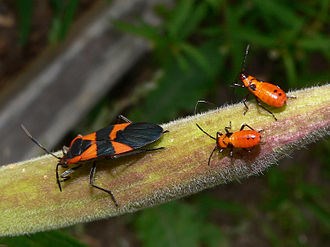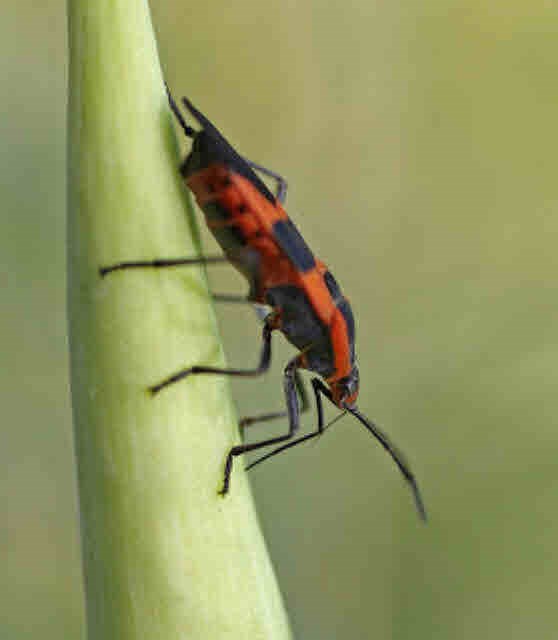INTRODUCTION:
We've had fun putting these caches out and everybody seems to be having fun finding them (unless of course, certain insects are out to "get you"). So, we are putting out more (caches, not insects). The theme this time is INSECTS (as you've already figured out by the title). Some of these you may encounter on your geocaching trips and some of them you may wish you had not. Instead of a steady line of caches down the trail, we thought we'd try something new for us. All are easy puzzle caches and the geoart is one of our favorite insects: the dragonfly - as it eats what annoys us all the most: mosquitoes.
Note: There may NOT be cell phone service in some areas of the K & P Trail.
TRANSPORTATION:
The K&P trail is a single lane dirt road with gravel on it in some areas. You can hike it, bike it or drive it albeit very slowly. When placing the caches we never drove over 15 km/hr. Mostly it was at about 10 km/hr. Just when you think it's smooth going a huge puddle hole will "get" you. On bikes, you will have no trouble except if you go out after heavy rain (or during rainfall) as it will be muddy in areas. On foot, be aware that there are very few houses along the way - so don't go alone. Safety in numbers. There are some pretty streams along the way, wetlands and Graham Lake just North of Lavant Station (a nice place for a picnic lunch).
INSECT:
Milkweed Bug
There are two types of Milkweed Bugs that love to hang out on the Milkweed plants: the Large Milkweed Bug (let's call it the LMB for short) and the Small Milkweed Bug (we'll call that one the SMB for short). Both feed on the seeds of the Milkweed plants. They are in the True Bug (Hemiptera) order of bugs and the Seed Bug (Lygaeidae) family.
Now, the LMB's and SMB's life-cycle is an interesting one. Why? Well, like the Ladybug, they do not go through complete metamorphosis when developing from egg to adult. The 'babies' or nymphs look kind of like the adults but don't have any wings nor any reproductive organs. They also lack the black spots initially (the spots show up later as the nymphs get older).
Females oviposit (lay eggs) in small areas/crevices between the pods on the Milkweed plant. She will oviposit about 30 eggs a day and can lay up to 2000 total in her lifetime (lifespan is about one month).
In about four days (when the temperature is warm, around the 80s or so) the bright-coloured nymph ('baby') hatches. Like the butterfly larvae, LMB and SMB nymphs grow by a series of molts (shedding of skin) and the stages are called instars. Each instar lasts approximately a week in length. As they molt and become larger in size, they slowly approach the appearance of the adult Milkweed Bug.
As they grow, the LMB and SMB nymphs are rather interesting in their behaviour. They are gregarious and can often be seen gathered together in one spot on a Milkweed plant…and, if the plant is touched or disturbed, then all of these brilliantly-coloured critters scatter!
Because the Milkweed Bugs feed on Milkweed, these insects are fairly safe from predators. Why? Just like the Monarch butterfly, whose larvae feed on Milkweed, which makes the adult also safe from most predators, the chemicals in the Milkweed latex (sap) is toxic. The latex contains cardiac glycosides, a type of cardenolide. If a predator eats one of these bugs, the predator will more than likely vomit. The same is true if your dog were to eat one.
Now, here's the question: Are these 'good' bugs or 'bad' bugs? It depends upon what you consider to be good or bad. Since the Milkweed Bugs are seed and sap-suckers, and since Milkweed is an important host plant for Monarch Butterfly caterpillars, they might be considered a 'bad' bug.

Large Milkweed Bug

Milkweed Bug
The cache can be found at:
-. --- .-. - .... ..-. --- .-. - -.-- ..-. .. ...- . --.. . .-. --- - .... .-. . . .-.-.- --- -. . ..-. .. ...- . --- -. . .-- . ... - ... . ...- . -. - -.-- ... .. -..- ..-. --- .-. - -.-- - .-- --- .-.-.- ..-. --- ..- .-. -. .. -. . ..-. .. ...- .